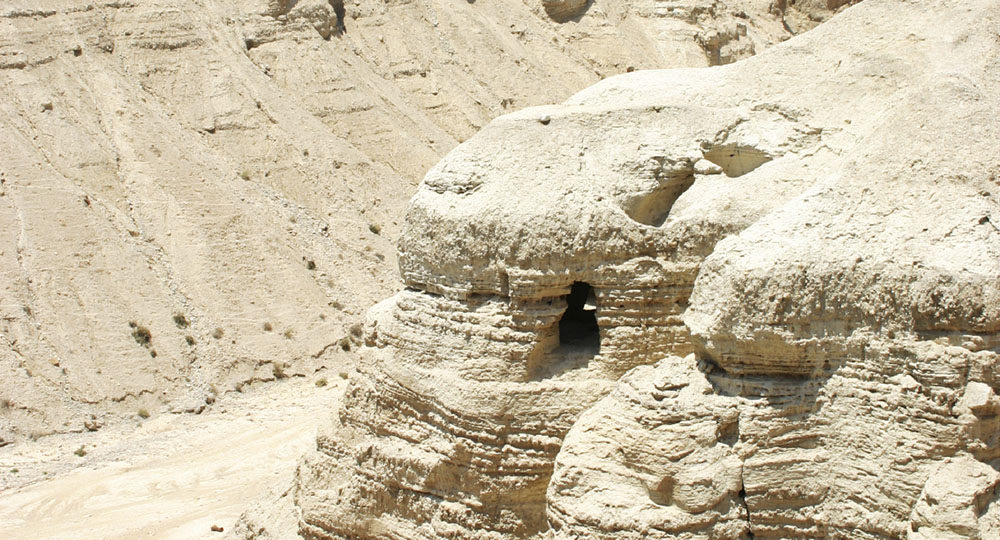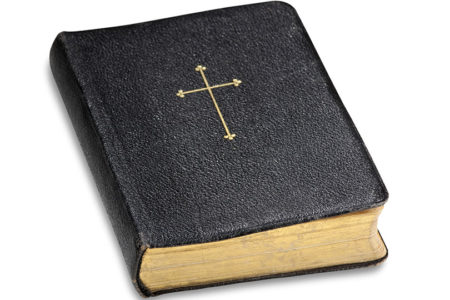Scrolls, Scripture, and the Savior
You search the Scriptures, for in them you think you have eternal life; and these are they which testify of Me (Jn. 5:39).
Housed in the Rockefeller Museum in Jerusalem is a curious document designated as 4QMMT. It is part of the Dead Sea Scrolls collection. In a small section of the text, an ancient writer, possibly a priest, encouraged an individual to study the Word carefully. “[And] we have wr[itten] to you that you should examine the book of Moses, and the words of the Prophets, and Davi[d].”1
When Jesus appeared to His disciples after His resurrection, He said to them, “These are the words which I spoke to you while I was still with you, that all things must be fulfilled which were written in the Law of Moses and the Prophets and the Psalms concerning Me” (Lk. 24:44). Both the Lord’s admonition and that in 4QMMT extol the worthiness of the Word of God.
The Dead Sea Scrolls contain the oldest collection of Old Testament manuscripts ever found. Before their discovery in the 1940s and 1950s, the oldest Old Testament document was the Masoretic Text, which dates from the ninth through the 11th centuries A.D. The Dead Sea Scrolls are at least a thousand years older, even predating the Septuagint, a Greek translation of the Old Testament produced in Egypt in the third and fourth centuries B.C. Since the original texts of the Bible books are not available, the Scrolls help scholars compare today’s Bible text with the ancient wording. This branch of literary analysis is called textual criticism.
Among the many tattered Dead Sea Scrolls are the books most frequently quoted in the New Testament: Deuteronomy, Isaiah, and the Psalms. Most important, these scrolls discovered in caves confirm the trustworthiness of Scripture and its central Messianic Savior, Jesus.
The Law of Moses
Deuteronomy is the fifth of the Five Books of Moses. Genesis, Exodus, Leviticus, Numbers, and Deuteronomy are known as Torah (Law). The ancient rabbis referred to Deuteronomy as Mishnah Torah, meaning “the Repetition of the Torah,” because it reviews or repeats the laws that were first mentioned in Exodus, Leviticus, and Numbers.
One of Deuteronomy’s main prophecies is 18:18–19, which speaks of a Messiah who, like Moses, will have special authority from God. An English translation of the Dead Sea Scrolls on this text reads, “[I will raise for them a prophet like you among their countrymen; I will put my words in] his mouth, and he will speak to them [all that I command him. And whoever does not listen to my words which] he will speak in my name, I [will hold] that person [accountable.”]2 The translators used brackets in the verse to indicate damaged phrases or words. Clearly, there is no difference between the ancient text and modern Bibles.
In Acts 3:22–23, the apostle Peter quoted the Deuteronomy prophecy in his sermon. Commenting on it and on Acts 3:22–23, Dr. Thomas L. Constable, senior professor of Bible Exposition at Dallas Theological Seminary, said,
Moses had predicted that God would provide prophets similar to himself through whom He would make His will known to His people (Deut. 18:15–19; cf. Lev. 23:29). As time passed, the Jews saw that this prophecy referred to one prophet in particular who would appear and who would be like Moses in other respects as well. He would deliver and judge His people. Thus believers in Peter’s day regarded this passage as messianic prophecy (cf. John 1:21b, 25; 7:40). Peter, by quoting this prophecy, affirmed that Jesus was the Messiah and urged his readers to accept Him or face destruction (v. 23).3
The Prophets
The Great Isaiah Scroll, as one section is called, presents a great example of accurate translation transmission. This extraordinary manuscript is particularly large. It is written on 17 sheets of parchment, is about 24 feet long and 11 inches high, and has 54 columns of text. As can be imagined, Israel considers this old parchment a national treasure. Since 1965, a copy has been on display at the Shrine of the Book museum in Jerusalem.
The most quoted passage in the New Testament is the prophecy of Isaiah 52:13—53:12. Apart from some insignificant differences in spelling and grammar, nothing challenges the veracity of the prophecy regarding a suffering Messiah. God has preserved this passage from Isaiah so as to remove any doubt regarding its meaning.
Victor Buksbazen (1903–1974), the first executive director of The Friends of Israel Gospel Ministry, wrote in his excellent exposition of Isaiah 53,
Generally, there is little difference between Jewish and Christian translations of this majestic passage of Isaiah, apart from a few words of secondary importance. However, there is a profound and basic difference in the interpretation of the text. For many centuries, ancient Jewish tradition has seen Isaiah 53 as a portrait of God’s suffering servant, the Messiah….Christians, following the ancient Jewish tradition, maintain that Isaiah 53 speaks of Messiah. Consequently, they see it as an amazing prophecy concerning Jesus, “the Lamb of God, who taketh away the sin of the world” (Jn. 1:29).4
The Psalms
The book of Psalms is the most copious of all the Bible books discovered in the Dead Sea Scrolls. Apparently, this fact reflects its importance for liturgical and study purposes. The Hebrew word for “psalms” is tehillim, which means “songs of praise.” In the New Testament, only the book of Isaiah is referred to more than the Psalms. The Great Psalms Scroll is the largest collection among the Dead Sea documents discovered in 1956. It was unrolled in 1961.
King David wrote most of the Psalms. Among the collection was this interesting text about David, found in the 11QPsa Psalter (“David’s Compositions”): “And David, the son of Jesse, was wise, and a light like the light of the sun, and literate….And the total [of his psalms and songs] was 4,050. All these he composed through prophecy which was given him from before the Most High.”5
Truly, the Bible is the only manuscript inspired by God and is profitable (2 Tim. 3:16). It was God’s choice to move human writers by His Spirit to produce the Holy Scriptures: “Knowing this first, that no prophecy of Scripture is of any private interpretation, for prophecy never came by the will of man, but holy men of God spoke as they were moved by the Holy Spirit” (2 Pet. 1:20–21).
Despite some damage by cave worms, the verses and sections that are decipherable are the same as in modern translations. This is also true regarding the other Bible scrolls discovered. “As for God, His way is perfect; the word of the Lᴏʀᴅ is proven; He is a shield to all who trust in Him” (2 Sam. 22:31).
The Word of God stands sure forever, but its main focus should never be overlooked. The great English preacher G. Campbell Morgan (1863–1945) put it this way: “There is no life in the Scriptures themselves, but if we follow where they lead, they will bring us to Him, and so we find life, not in the Scriptures, but in Him through them.”6
Kiss the Son, lest He be angry, and you perish in the way, when His wrath is kindled but a little. Blessed are all those who put their trust in Him (Ps. 2:12).
ENDNOTES
- The Dead Sea Scrolls Bible (New York: HarperCollins, 1999), 509.
- Ibid., 172.
- Dr. Thomas L. Constable, “Notes on Acts,” 2010 ed., <www.soniclight.com/constable/notes/pdf/acts.pdf>.
- Victor Buksbazen, Isaiah’s Messiah (Bellmawr, NJ: The Friends of Israel Gospel Ministry, Inc., 2002), 8.
- “Qumran Psalms Scroll (11Q5/11QPs-a)” <www.biblical-studies.ca/dss/dss-introduction/81-11q5.html>.
- 6 G. Campbell Morgan, cited in Leon Morris, The Gospel of John (Grand Rapids, MI: Eerdmans, 1971), 331 n 116.







